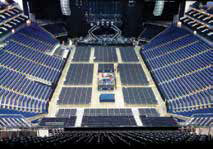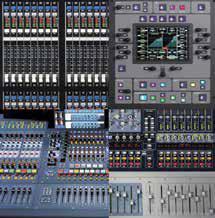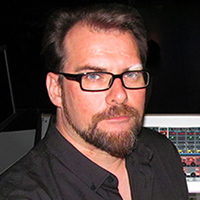As a sound engineer, you spend years honing the ability to subtly appraise a mix. You learn to zoom in on each individual element and then zoom out to the whole mix, rapidly making decisions about what is and isn’t working so that you can tweak various parameters to bring those individual elements into one glorious whole.
After a while it becomes sub-conscious, you’re not even aware of it, it’s just part of what you do. The only problem being that once you’ve acquired this ability, it’s hard to turn it off.
Most of us got into sound because we love music, so it’s inevitable that we’ll end up at a gig as a member of the audience at some point. It’s not easy having no back stage privileges — no free beer, no artisanal catering, and only being allowed to occupy the space between the stage and the front doors for the duration.
What can make this experience even worse is being exposed to common live mix mistakes. Here are five that I’ve recently encountered at gigs, as well as some suggestions for how they can be avoided.

Big Roomitis. This particular affliction can be observed in medium to large venues where bands suddenly find themselves thrust into larger rooms than they’re used to playing in, often as a result of being the support band to a more established act. This often means the band can afford to bring their own sound engineer along for the first time, and they’ll often engage someone who’s cut their teeth in small rooms. So when greeted with a large PA in a large space, the engineer struggles to cope and produces a big messy mix.
Now obviously we all need to step out of our comfort zone every now and then to up our game and take things to the next level, so a little bit of thought can help ease the transition. The key thing to realize is that in small venues you’re not really mixing the whole sound; there will always be a large amount of ambient sound coming off the stage.
The obvious candidates are drums and amplifiers but bear in mind that the monitor system will also be generating a fair amount of level (unless the band’s using in-ears, of course). So in effect, a big chunk of the mix is already there and you’re just adding a top layer of sound which (hopefully) gives the mix elements the definition they need to stand out and work together.
However, as soon as you get into a bigger room with a large PA, the stage spill is much less of a concern so you’re required to build the entire mix from scratch. This is where a lot of engineers fall down because if you’re doing the same thing as in those smaller venues, the mix lacks body, so you try to compensate with extra level and end up with that big messy mix. The key to avoiding this problem is to adapt your approach to the mix to suit the room and the system you’re mixing on.

Unknown Desk Syndrome. The great thing about analog consoles is that once you’ve figured out how to work one of them, you can pretty much operate them all, it’s just a question of scale. Unfortunately this maxim does not extend to digital consoles. Each manufacturer has its own unique way of addressing the digital paradigm, which can make it difficult for engineers to get to grips with all of them.
Hence you turn up at the show, often as a support band, with a limited sound check and thus a limited amount of time to figure out a decent work flow on an unfamiliar control surface. I know from painful experience that if you don’t know the console it can slow you down and really hamper the ability to mix the show as you normally would.
The trick here is to do your homework. This starts weeks in advance of the gig/tour. Find out which console you’ll be using, and if it’s not one you’ve used before, contact the manufacturer to see if you can get some training. Many of them offer regular free training session and some are even happy for you to pop along to their facility to practice.















